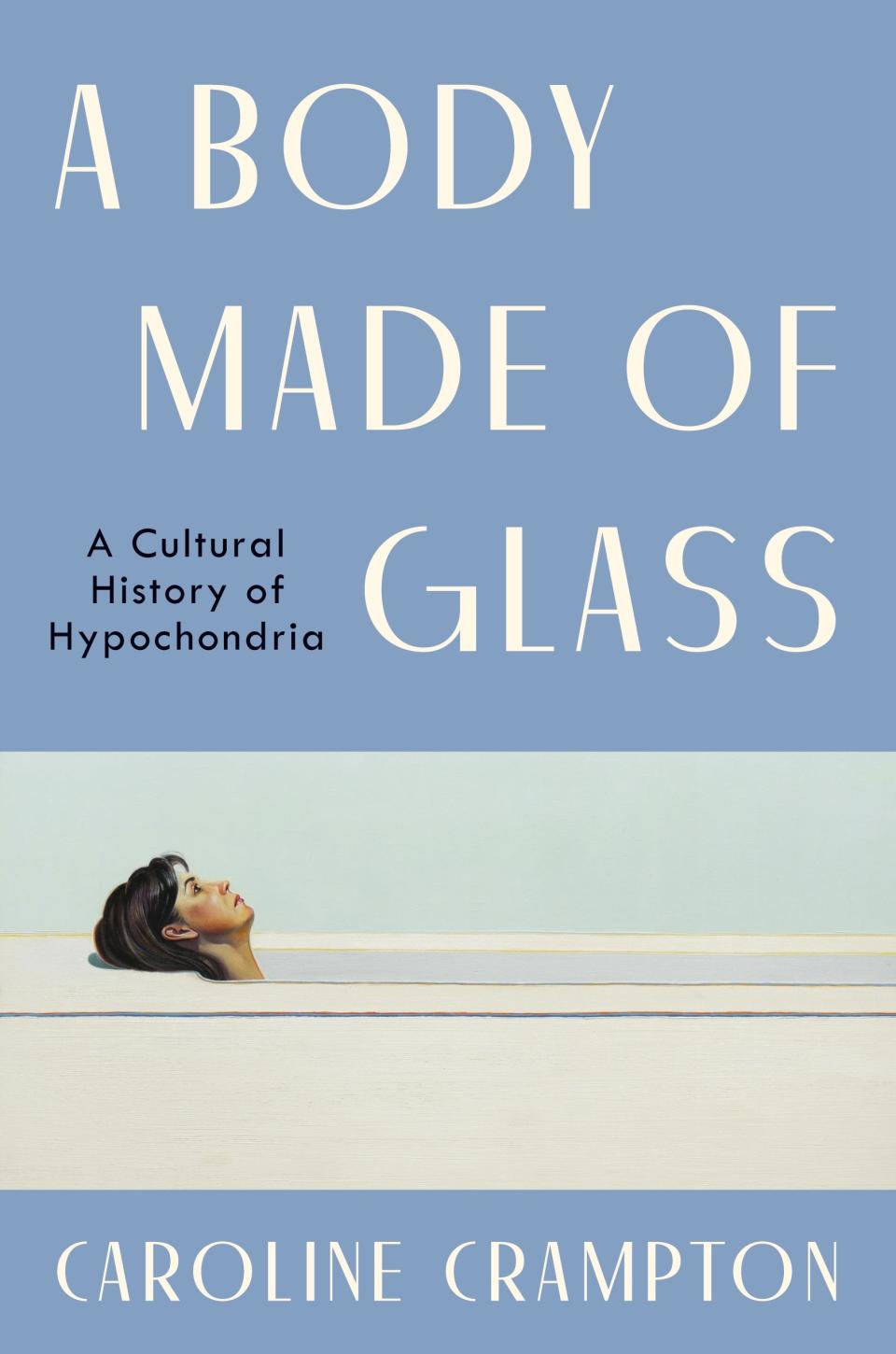In the 1700s, People Thought This Mental Disorder Came From “Vapors.” It’s Still a Mystery Now.
- Oops!Something went wrong.Please try again later.
Hypochondriacs have a poor reputation. The novels of Jane Austen, for example, contain numerous characters who use their ill health to control the behavior of friends and family members. “On a per-novel basis,” writes Caroline Crampton in her history of hypochondria, A Body Made of Glass, “she surely outpaces any other writer in the English language” when it comes to such characters. This choice was based in firsthand experience; Austen’s own mother complained all her life about health problems that Jane considered to be “chiefly in her head,” a judgment confirmed by the fact that Austen’s mother died in her 80s, outliving her celebrated daughter by a decade.
Many people resent hypochondriacs not only for being manipulative but for needlessly consuming medical resources that ought to go to the genuinely ill. A lot of those resentful people are doctors, with whom the “worried well” have long had a fraught relationship. A Body Made of Glass constitutes Crampton’s argument that hypochondriacs really are sick—it’s just that the nature of their malady is unclear. The glass body in the book’s title is no mere metaphor; beginning in the Middle Ages, cases of people convinced that they were made of that fragile material were, if not common, nevertheless well known. In the late 14th century, France’s King Charles VI refused to leave a bed of straw for fear of shattering into pieces. A few hundred years later, a less illustrious Frenchman reportedly went around with a cushion strapped to his backside because he believed that that particular body part might break when he sat down. In a conclusion that may be apocryphal, this man was “cured” by a doctor who beat him until he was forced to admit that the abused part was flesh after all, capable of feeling pain but not of smashing into shards.

The hypochondriacs I’ve known have all suffered from a suggestible, anxious imagination, not outright delusion. They read an article or hear about some disease or condition previously unknown to them and immediately convince themselves that they’ve got it too. They are always coming down with something, but their maladies only occasionally arrive in full. But just as theirs is a different order of dysfunction from Charles VI, so are they unlike Crampton, a British journalist, who has excellent reasons for worrying about her health. At 17 she was diagnosed with Hodgkin lymphoma. Studying an old photograph of herself at a school dance, taken before her diagnosis, she observes of that untroubled version of herself: “I haven’t yet found the tennis-ball-sized lump just above my left collarbone. And yet, in the photograph, it’s already big enough to cast its own shadow on my neck. How could I not have seen it then? How long had it been there?”
Months of grueling cancer treatments followed, including an especially painful procedure to extract eggs from Crampton’s ovaries before the commencement of a chemotherapy that would have destroyed them. She was pronounced in remission, only to have the cancer return a year later. Now every little twinge or imagined bump sends her into spirals of worry. Who can blame her? “My anxiety is rooted in the idea that disease could be lurking undetected, ready to consume me at any time,” she writes, and this in fact has been her lived experience. She doesn’t want to miss, or dismiss, the signs again.

Like most books labeled “cultural history,” A Body Made of Glass is drawn more from archival and textual sources than from firsthand reporting. Crampton is an elegant, perceptive writer, and her scholarship doesn’t weigh the book down, but at times I longed for a bit of fresh air to enliven the pervasive whiff of the archives. (Are there hypochondriac societies? People she might interview who were initially dismissed as malingerers but who were later vindicated?) Nevertheless, what Crampton does discover in the history of hypochondria sheds provocative light on our evolving thinking about the relationship between mind and body.
Until fairly recently, hypochondria was considered a nonimaginary affliction. From antiquity, it was believed to be caused by an emanation from the section of the abdomen just below the rib cage, with the liver and spleen regarded as typical culprits. Like other forms of “melancholia,” it was deemed to be the result of a surplus of black bile, one of the four humors whose balance determined both health and temperament. This theory gave way, in the 18th century, to theories about “vapors” (yet another French king, Louis XIV, was afflicted with these) and “animal spirits.” It wasn’t until 1822 that the concept of hypochondria as a purely mental condition began to prevail. Yet the burgeoning field of psychoanalysis later in that century did not yield any particularly useful thinking on the subject—in part, Crampton suggests, because Sigmund Freud himself was prone to hypochondria and not inclined to examine it closely. He linked it with narcissism and considered it, like that disorder, to be “unanalyzable.”
For Crampton, hypochondria consists of an anxious longing for “narrative,” a way of making sense of the terrifying randomness of bodily existence that leads, say, to a teenager on her way to university being suddenly poleaxed by blood cancer. Storytelling provides the comfort of meaning to a world where such catastrophes occur. But since hypochondria is also at its simplest a “fear of death,” it isn’t always clear what comfort its narrative provides. Does the hypochondriac want to be told that they are healthy? Or do they want their worst fears confirmed by the tests they demand of sometimes reluctant physicians? During a brief period when Crampton, waiting for results of such tests, convinced herself that she had not long to live, she experienced an interlude of surpassing “peace,” and even “euphoria.” “The normal niggles of everyday life just vanished from view,” she writes. “I wanted to bottle this feeling, to live like this all the time, in a state of being where frustrating customer helplines and public transport delays did not affect me at all because they were not bad medical news.” Though she does not point this out herself, she had also been liberated from the perpetual worry that something was wrong by a certainty that something was wrong—though, in the end, it was misplaced.
The conviction that hypochondria is, like the ailments of Jane Austen’s mother, “all in her head” turns out to be as rickety as the old belief that it was caused by vapors rising from the spleen. The indivisibility of body and mind keeps reasserting itself. Placebos and their lesser-known counterparts, nocebos—innocuous “treatments” that produce negative side effects purely through the power of suggestion—have always been with us. The 17th-century British polymath (and hypochondriac) Robert Burton, author of The Anatomy of Melancholy, is the most dramatic example of a nocebo Crampton recounts. Burton put his utmost faith in a horoscope that predicted he would die at the age of 63 and, sure enough, he did.
In recent years, the bestselling book The Body Keeps the Score, by the psychiatrist and trauma researcher Bessel van der Kolk, has popularized the idea that trauma produces lasting physiological and neurological effects. “Hypochondria is not PTSD, but it shares some of the same characteristics, and the two can go together,” Crampton writes. Often, hypochondria afflicts a person after a close friend or family member suffers or dies from a serious illness. Crampton’s own experiences with cancer certainly qualify as traumatic, and so when the pandemic triggered an agonizing bout of nightmares and insomnia, she sought out a treatment endorsed by van der Kolk. Eye movement desensitization and reprocessing involves a patient’s being guided by a therapist through a confrontation with their most traumatic memories while moving their eyes from left to right. As quackish as this therapy sounds, Crampton (as many others have) found it effective.
Is EMDR a placebo? Was the actual cause of Crampton’s relief simply the experience of recounting that terrible fertility procedure with an empathetic therapist? I would once have been more dismissive of the healing powers of eye flicking. But reading A Body Made of Glass has kindled a much greater sympathy for hypochondriacs in me, a person who previously regarded their obsessive, needless anxiety as exasperating. I am no longer so sure that it’s all in anyone’s head, or what that might even mean. Neither, really, is Crampton. She confesses, at the end of this book about the hunger for satisfying stories, that she has not arrived at narrative closure or resolution in her own life. She remains a hypochondriac. She even worries that writing a book about hypochondria has made the condition a permanent feature of her identity, that in becoming an expert, she has doomed herself to the disease. “An unanswerable question,” she concludes—just another in a life, like many hypochondriacs’ lives, that feels full of them.

